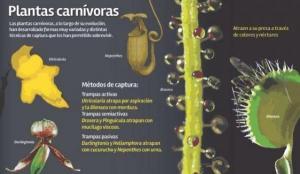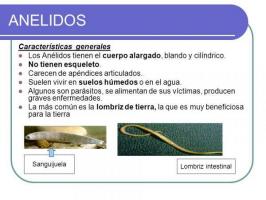Classification of mammals
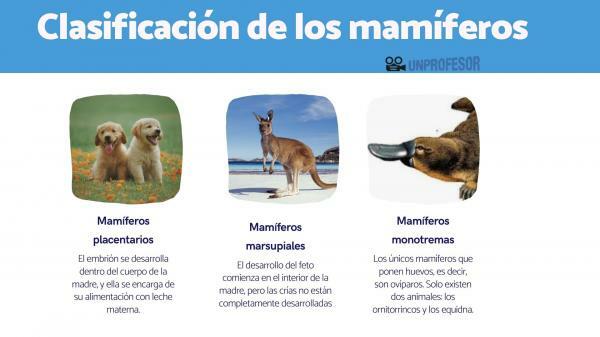
On planet Earth there are the most diverse animals: from microscopic animals like the flea, to huge animals like elephants; animals that swim, fly or walk. Of all of them, the animals that most attract our attention are mammals, either due to their large number (more than 500 different species), so close to us on a day-to-day basis or simply because they can serve as a pet or to carry out tasks in traditional agriculture, etc.
Mammals are a group of animals with great diversity, so for their study it is necessary to divide and group them according to different characteristics. In this lesson from a TEACHER we will see the classification of mammals depending on the way their young develop. If you want to learn more about mammals, keep reading!
Index
- What are mammals?
- Placental mammals, the group to which humans belong
- Marsupial mammals, typical of Oceania
- Monotreme mammals, the great unknown
What are mammals?
Before talking about the classification of mammals, we have to know what this term means. The class of mammals is made up of many species, which can be very similar to or as different from each other as humans, shrews, and platypus.
- The mammals They are animals of the class Mammalia, encompassed within the vertebrates. Like other animals, mammals are vertebrate animals, that is, they have a central body axis made up of bone, which in this case is called the vertebral column.
- In addition to being vertebrates, mammals are defined by being animals warm-blooded and possessing mammary glands, in which the female produces milk to feed their young during the early stages of life. In addition, they have hair during all stages of life, be it shorter or longer; they breathe thanks to the lungs, they have an inner ear with three ossicles and the mouth surrounded by lips.
- One of the most important features of mammals is how they take care of their young. The vast majority of mammals give birth to several fully formed young, so keeping them alive and helping them develop in the new challenging environment is not easy. That is why, as we will see below, in nature different strategies have been designed on how mammals complete their embryonic development.
Placental mammals, the group to which humans belong.
We begin the classification of mammals by talking about the placental, the group to which we belong. And, when we think of any mammal, we usually refer to a placental mammal, since they are the best known group of mammals, either due to the large number of different species, as well as their development, diversity and geographical distribution close to man. These animals populate a wide range of ecosystems and have diverse forms of life.
Placental mammals are those in which the embryo develops inside the body of the mother, specifically in the womb. Inside the uterus is the placenta, which gives the group its name. The placenta It is a bag that supports the fetus while it grows inside the mother's uterus. This bag allows the fetus to be in contact with the mother and to feed on her, but also to protect it from the mother's immune system. Once the calf is born, the mother takes care of feeding it with breastmilk during the first months of age and takes care of her.
The appearance of the placenta means that the embryo grows much more than in other cases, and that these mammals give birth to relatively large and mature young, with a better chance of surviving in the external environment. In return, the mother during pregnancy may be more exposed to predators, since transporting and nurturing them is a task that consumes many resources and effort.
The examples of mammals are very varied. Within this group we find small animals such as rats and mice, marine animals such as cetaceans (dolphins and whales), the primates (monkeys, chimpanzees, orangutans and we, the humans), etc.
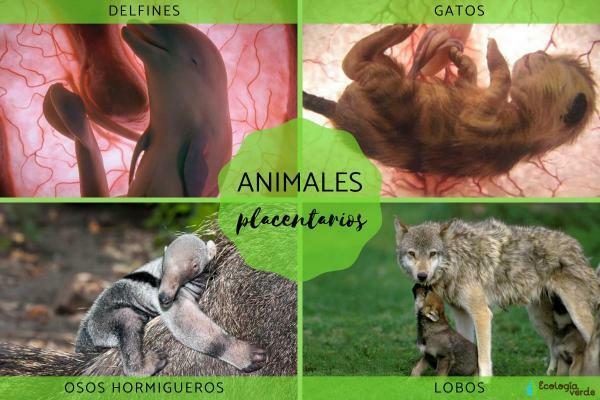
Marsupial mammals, typical of Oceania.
Despite being a group with about 300 species, marsupials are own of Oceania, since appeared when this continent had already separated from the rest. The most representative species kangaroos and koalas, but there are also more unknown animals such as wombats.
Like placental mammals, fetal development begins inside the motherIn utero but in marsupials, the young do not grow and develop as much. At birth, the baby marsupial not fully developed: the smell, the mouth and the digestive and respiratory systems are sufficiently evolved to survive, but for example their vision and hearing are still those of a fetus.
For this reason, the newborn babies climb to the edge of a bag that the mother has on the outside of the abdomen: the pouch. There they drop and enter her, clinging to one of the breasts, from which they feed. This bag is similar to a placenta inside, and inside the baby continues to develop up to 9 months of age, in which although the calf leaves the pouch, it does not stop being suckled until 12 months.
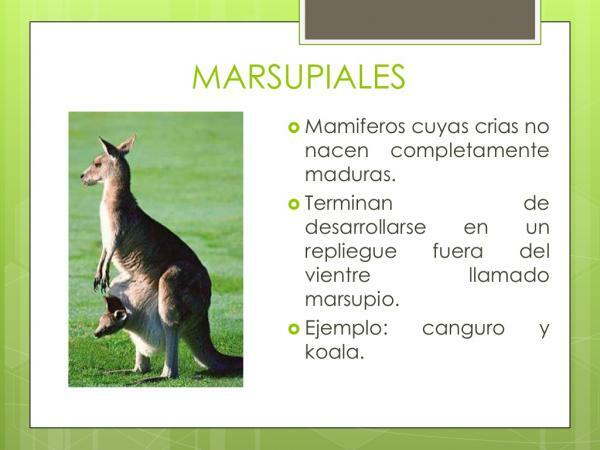
Monotreme mammals, the great unknown.
Monotreme mammals are the group of mammals less known, since they are the most disparate to the general scheme that we have of mammals close to us. The first characteristic that stands out about monotremes is that they are the only mammals that lay eggs, that is, they are oviparous. They are believed to be so different because they are the oldest mammal group of all and could be derived directly from the synapsid reptiles of the Triassic.
Another of the most distinctive characteristics of monotremes is that, despite having mammary glands, lack nipples, so the baby licks the milk from a tuft of gray hair.
There are only two living animals within the monotremes: platypus and echidna. The echidna or spiny anteater are characterized by their body covered with spikes and their long tongue, which they use to feed on ants and termites. For its part, the platypus is a great swimmer thanks to its webbed feet and tail; It feeds on a horny beak, with which it hunts any living being found at the bottom of rivers or lakes in Australia.

If you want to read more articles similar to Classification of mammals, we recommend that you enter our category of biology.
Bibliography
- Icarito (s.f) Classification of mammals.
- Classification of animals (s.f) Classification of mammals.


